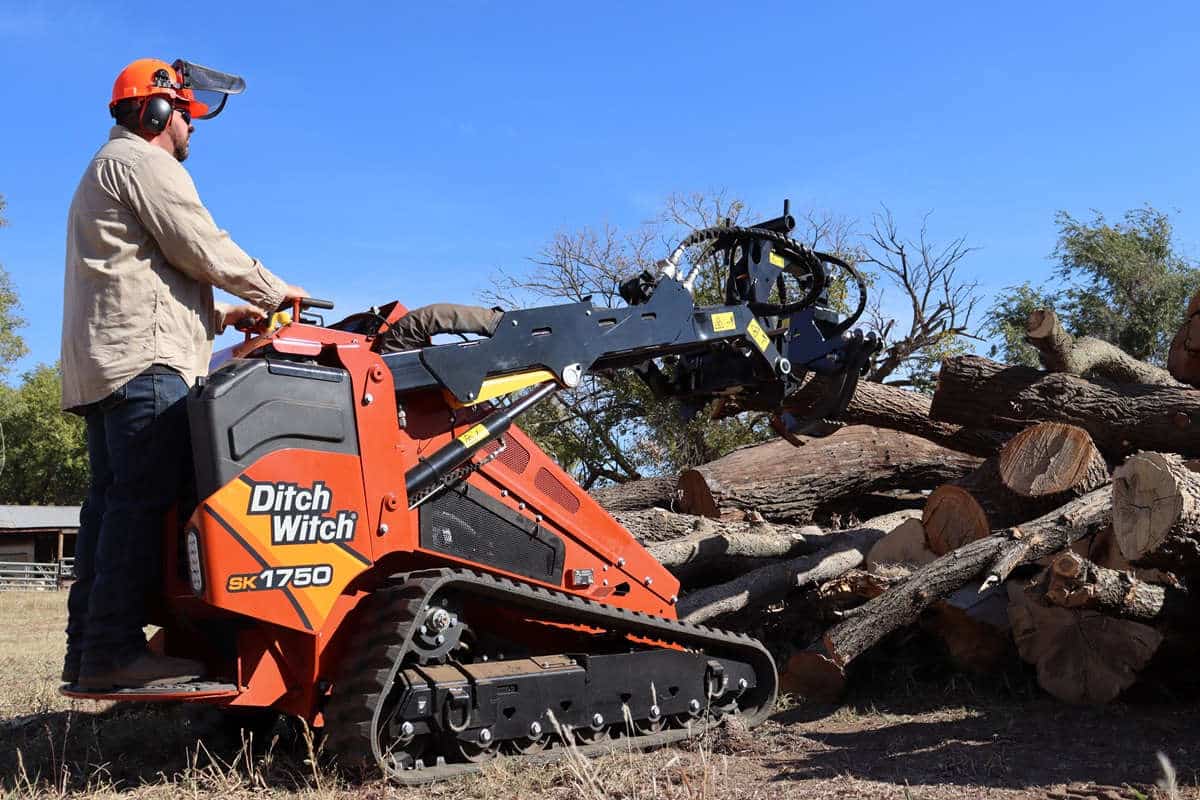Grab a Fork

“Safe handling of pipe requires the operator to know exactly where his load is at all times,” says Jamie Adams, Product Manager for Paladin Attachments. “Pipe forks can help him do this. Pipe forks make it very simple to load and carry multiple pipes or single pipes depending on job requirements. Rapid loading and unloading of materials is simple and efficient.”
Pipe forks are specifically tailored for handling pipe and constructed with durability in mind. Adams points out that pipe forks boast a rugged design with a strengthened round bar, custom tine lengths and wider carriages to handle heavier payloads and the unique characteristics of handling pipe safely.
This unique attachment can be used to maneuver a variety of pipes as small as 6 in. in diameter to as large as 6 ft in diameter. Manufacturers such as JRB, Dymax and ACS offer options that range from $20,000 to $35,000, depending on options, size and weight carrying capabilities.
Before You Buy
As with any equipment purchase, there are plenty of considerations to make, especially when determining how the attachment will be used and what’s expected of it. For example, jobsite conditions may warrant a particular feature or addition to the pipe fork. This should be determined ahead of time to ensure you have the right attachment and proper modifications for the task at hand.
“When selecting the correct pipe fork attachment for an application, the contractor should always consider the jobsite requirements such as site preparation, yard loading or utility trench placement,” says Adams. “Some jobs may also require pipe clamps as an option to securely hold the pipe in place during operation.”
The design and construction of the attachment itself is particularly important when selecting a pipe fork. As always, an operator needs to make sure his machine and attachments are paired correctly for a productive result.
“The fork tine length should always be considered, as well as the robustness of the construction,” explains Adams. “The tines must be long enough to unload pipes from a truck without losing the load. It is also critical that the specifications of the pipe fork attachment be matched carefully with the load carrying capacity of the carrier for safety in operation.”
According to Adams, pipe forks are not rated by the machine’s horsepower but rather by its full turn static tip load. If the carrier is capable of lifting the load, then the pipe fork should be designed to meet the same capacity.
Staying Safe
Since moving heavy, lengthy pipe can be a cumbersome project, proper techniques should be used to ensure safe operation. Safety should always be an operator’s No. 1 priority no matter what he or she is doing on onsite.
“Always center the load even if moving the loader is required,” cautions Adams. “Never use a pipe fork attachment that is too weak for the carrier, as unsafe conditions could develop and co-workers could be injured if the attachment cannot carry the weight of the load. Spotters should always be used in confined areas to ensure that long pipes are never allowed to contact people or property.”
And as always, be sure to consult the pipe fork attachment’s operator’s manual before hitting the jobsite with your new purchase. It’s also important to keep it handy for any operational questions down the line.
Although pipe forks are rugged, they need a little TLC every now and then. Proper maintenance will help ensure both the attachment and the machine it’s coupled to stay productive and safe while out on the job.
“As with any attachment, routine maintenance should be performed daily to ensure that all moving surfaces are well lubricated and clean, that all load bearing surfaces are free of debris and that proper visibility to the load is confirmed,” says Adams. “Hydraulic clamps require that all hoses and fittings be inspected for nicks and abrasion daily. In general, careful daily inspection of the attachment will help ensure safe operation.”
Pam Kleineke is Associate Editor of Utility Contractor.




